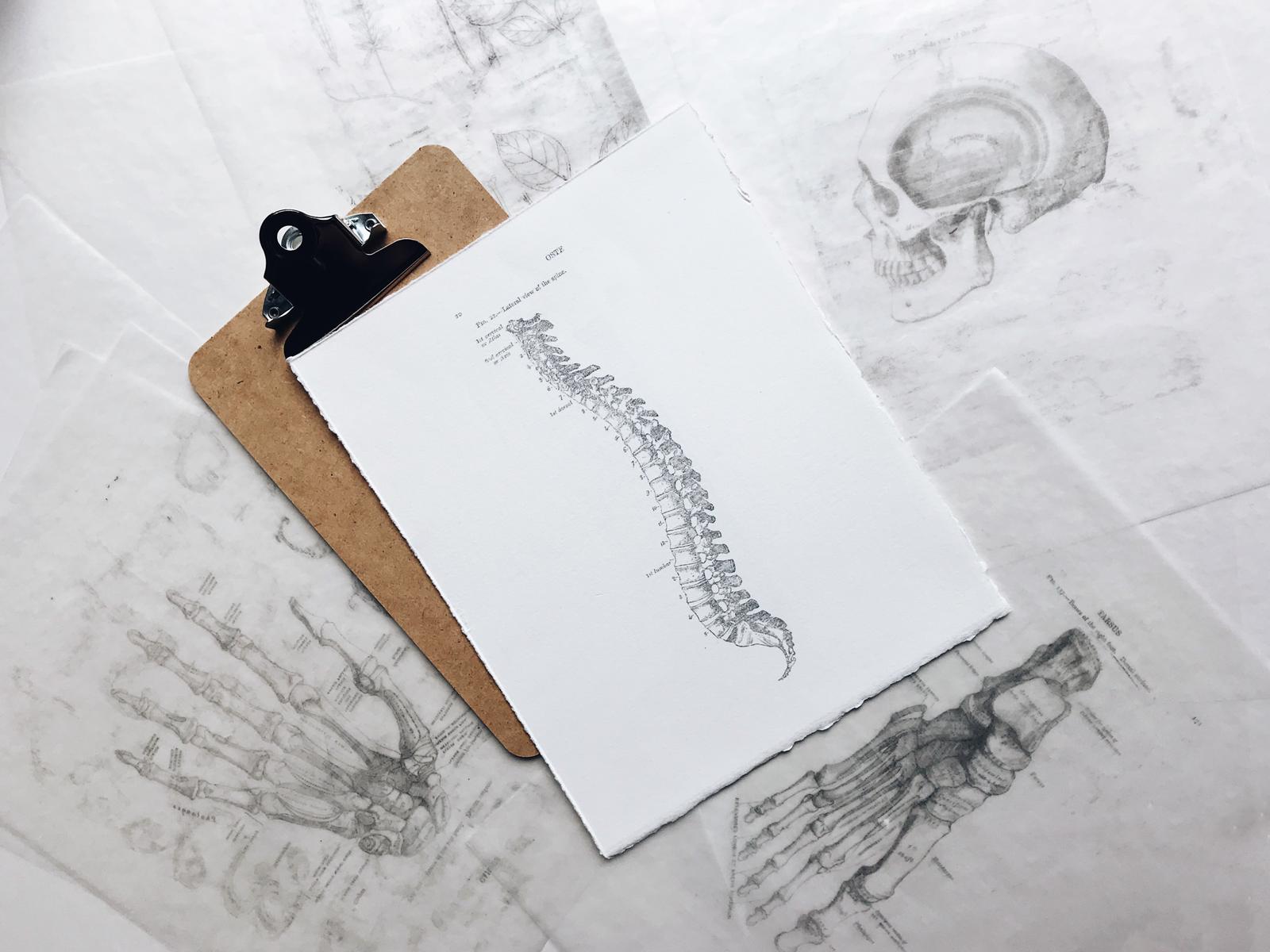Spinal Articulation with Unite Health APPI Presenter, Eva Heraud
In this blog APPI Unite Health Course Educator, Eva Heraud, explores "Spinal Articulation".
Eva hails from the UK and qualified as a physiotherapist in 2003. She gained a depth of experience in the public and private sector, alongside traveling and working as an underwater videographer. Eva moved to Melbourne in 2010 where she focussed on Pilates and movement-based Physiotherapy. She studied APPI in 2003 and completed a range of Pilates training alongside further study in biomechanics. In addition to this, Eva founded Have Movement in 2018. Read more here.
View our 2021 courses in full here. Clinical and non-clinical options available.
Spinal Articulation
Who remembers Warren G’s song - Regulators?
Ever since I started my Pilates journey whenever I work on flexion, extension, side flexion and rotation of the spine I sing in my head “articulate” as good ol Mr G would sing “Regulate”
If you haven’t heard the song I suggest you have a listen.
And if you don’t think about spinal articulation every time you help a Pilates client move or you help yourself move for that matter I highly recommend you do that too.
Think all the moves in all the directions in all the dimensions
- Flexion (sagittal)
- Extension (sagittal)
- Lateral flexion (frontal)
- Rotation (transverse)
Side on (sagittal - S for side), front on (frontal - thats easy “front”) , top down (transverse - T for top)
And a combination where appropriate. Moving your spine in all directions is encouraged in every session.
How little, which direction first and which direction more is up to you, always observing and assessing the person in front of you. Flexion, Side Flexion, and Rotation before Extension in most cases due to most bodies not knowing good extension and needing to warm to the movement.
As with all Pilates, repertoire consider what you are hoping to achieve based on what you know about your client. History and current situation. Always relate it back to function. Find the sweet spot, enough challenge without the “bracing” that can occur when the demand is too high.
Think Breathe
- Breathing is a movement.
- Breathing is of course one of the principles of Pilates.
- Breathing assists stability of the spine and it also assists mobility of the spine.
- When you take that lovely breath of air in, your spine extends.
- When you release your breath out your spine flexes.
- You can assist with the articulation using the breath and position.
For example
Breathing in, instead of out, coming up into breaststroke level (2 taught in APPI Matwork 1) Using the breath to enhance the movement, rather than the typical breath out on effort.
Mermaid stretch (taught in APPI Matwork 2) - Breathing into the side of your body to accentuate the lateral flexion and rotation. Think about the “why” of your breath, with a cupful of juicy clinical reasoning.
Remember APPI teaching comes back to function every time and the functional breath is reciprocal so as long as you breathe in the first instance you are doing ok. You can add the timing of the breath as you go. Oh and for those who read the previous blog on breathing - consider in and out through the nose - give your diaphragm a good workout.
Think length
It's my favourite “cue” in Pilates. When less is more - let length be your cue of choice.
Not least that you get to talk about helium balloons and sometimes Pilates fairies (gently) pulling the body “long” on either side of a joint. I’ve used that cue before and it works!
This concept of conscious lengthening has many benefits. Actively lengthening may reduce pressure on the intervertebral discs, creating space for the vertebrae to move.
As you lengthen, spinal muscles are drawn more towards the central alignment of the body and contribute to the cylinder of stability - assisting the pelvic floor and deep abdominals to engage more deeply.
Consider your length-tension curves. A theory that is at the “core” (‘scuse the pun) of the modern Pilates and movement theories.
I’ll leave this video here which explains it nicely for all you anatomy and physiology geeks.
When it comes to effective cueing always consider verbal, tactile, and imagery. It's always dependent on the person in front of you. Here are a few ideas to start you off:
- Verbal - “look in the direction you wish to move your spine”
- Tactile - Run your fingers along the spinous processes where you want to encourage movement.
- Imagery - Flexion - imagine the spine as a fern folding down

Think Anatomy
- Oh the spine - beautiful design - flexi and stable all in one - biomechanical wow.
- Discs at the front - facets at the back.
- Not one single vertebrae are the same, although some more similar than others allowing us to label them sacrum, lumbar, thoracic, cervical.
- Sacrum, Lumbar (1-5), Thoracic (1-12), Cervical (1-7)
The direction you want to move determines where you’ll get the most movement and vice versa.
- More flexion - lumbar, thoracic and cervical vertebrae can all give you that - hmm interesting that's where a lot of us end up!
- More extension - well cervical yes - not a flip top though (too much movement at one vertebrae) when moving segmentally is limited by the facet joints.
- More side flexion - all the vertebrae enjoy some of this sideways sliding.
- More rotation - not so much the lumbar spine here.
Think about the facet joint orientation to guide your movement expectations.
- The cervical facet joints slope downwards top to the side, facets at approximately 45 degrees.
- The thoracic facet joints are more vertical facing backward, facets at approximately 60 degrees.
- The lumbar spine facet joints face inwards, facets at approximately 90 degrees.

Cervical
The greatest range of motion in all planes. To allow the function of the all-seeing, all-knowing head! 50% of the cervical range of motion comes from the atlanto-occipital and atlanto-axial joint.
Thoracic
The smallest range of motion in all planes. Wonder why that might be? That’ll be coming up next (here’s a clue - they are attached to the thoracic spine).
The most amount of movement at the thoracic spine comes from rotation and the least lateral flexion.
Ribs
You guessed it. Another of the body’s masterpieces. The ribs form the main part of the thoracic cage. They have a protective role of those very important organs, namely the heart and lungs. Their primary role is in breathing. The additional architecture at the thoracic spine does restrict available movement.
Working on rib mobility in the session will support spinal movement. APPI Arm openings in Matwork Level 1 is a goodie.
Worth considering Fryette’s law: When you have movement in one direction it will limit the movement of the other directions. Arm opening is a good example, where over encouragement of “soft ribs” might put the thoracic spine into a more relative flexed position, limiting rotation and as a result, you might see movement compensation in the arms.
Lumbar
The lumbar spine was designed for bearing weight. Larger vertebrae and discs to absorb the load.
Side on is where you’ll see the most movement into flexion and extension.
If you want to twist again like you did last summer the lumbar region won’t join the party as there is the least amount of movement into rotation. Although a little more at L5/S1.
Muscles and Fascia
Consider the supportive core muscles (Transversus Abdominus, Multifidus, Pelvic Floor, Diaphragm) and strengthen core muscles (Latissimus Dorsi, Serratus Anterior, Oblique Abdominals, Rectus Abdominus, Quadratus Lumborum, Gluteals) that we discuss in APPI matwork one. Don’t forget the thoraco-lumbar fascia - it's really fascia-nating.
Think APPI Pilates repertoire
Flexion (sagittal plane) - APPI Cat stretch on the Cadillac
A wonderful exercise to mobilise the spine through flexion and extension to neutral… with a lovely warmth through your tummy as your deep abdominals give you a helping hand to return. Remember to gently lift and scoop through your abdominals. Lengthening the back of your body. Can you keep your pelvis stacked on your knees (I can … almost! - see the video below)
Pilates repertoire is slightly more flexion dominant, Joseph created the program based on his observations of those around him being more extended. Very different from what we see in the current population. Worth considering when we use flexion.
Take a moment to enjoy the extension and then focus on the return to upright, effectively flexion to extension. Like in Spine Stretch in APPI matwork level 2.
Extension (sagittal plane) - APPI modified swan dive from the chair
Consider where you position yourself as to where you focus the extension - notice how I am focusing on thoracic extension and also looking after my low back as I do tend to “hang out” in extension when I stand (like all the cool kids do) so when I exercise in prone I have to watch I don’t hyperext there.
The wunda chair allows me to fix my lower torso and lift only from my thoracic whilst taking out the effect of my rather (very!) tight hip flexors. Pop a block under your feet or rest your legs on the Pilates box if needed.
Lateral Flexion (frontal plane) - APPI Mermaid on the Reformer
Who’s side are you on? Both!
Side flexion.
Anchor from the sitz bones - if you or your client can’t achieve equal weight, try cross legged or on the Cadillac or Wunda chair.
Arm on the foot bar. Like a water fountain lift up and out of your waist.
Feeling yourself lengthen while pushing through your hand and anchoring from your pelvis.
Breath into your sides
Return and side flex to the other side for a slightly different experience, based on how your hips are positioned.
Rotation (transverse plane)
APPI Rotation with port de bras - oooh rotation - sooo good!
The barrel helps to fix the pelvis and create an anchor point to grow from.
Like a spiral staircase. Breathing in as you lift out of your pelvis.
Joseph would refer to rotation as “wringing out the lungs” - consider how you use the breath to increase the range of rotation here.
- - -
Help yourself and your client move differently into a more aligned and even space through movement awareness and well… movement, informed movement.
Where are you or your client moving?
Where are you or your client not moving?
If you move the way you always move… you’ll move the way you always move.
Invite movement where there is little and send a little movement limit where there is lots.
Move in all the ways.
There is always someone that will need the opposite of what you may initially think.
Every single body is different from the next so be open to throwing out the text book (not the APPI manual of course!) and working on what the person in front of you needs in that moment.
Don’t forget to have a little regulation in your articulation.
Articulate on…
X
References
- Complete Anatomy App - well worth having an app like this to look at joints, muscles and much more in 3D for yourself and as an education tool for clients.
- APPI Matwork Level 1.
- APPI Equipment Level 3 (Spinal Articulation).
- Fryetts Law - Philip E. Greenman; Principles of Manual medicine; lippincott Williams and Wilkins; 3 rd edn; pg:53 – 65.
